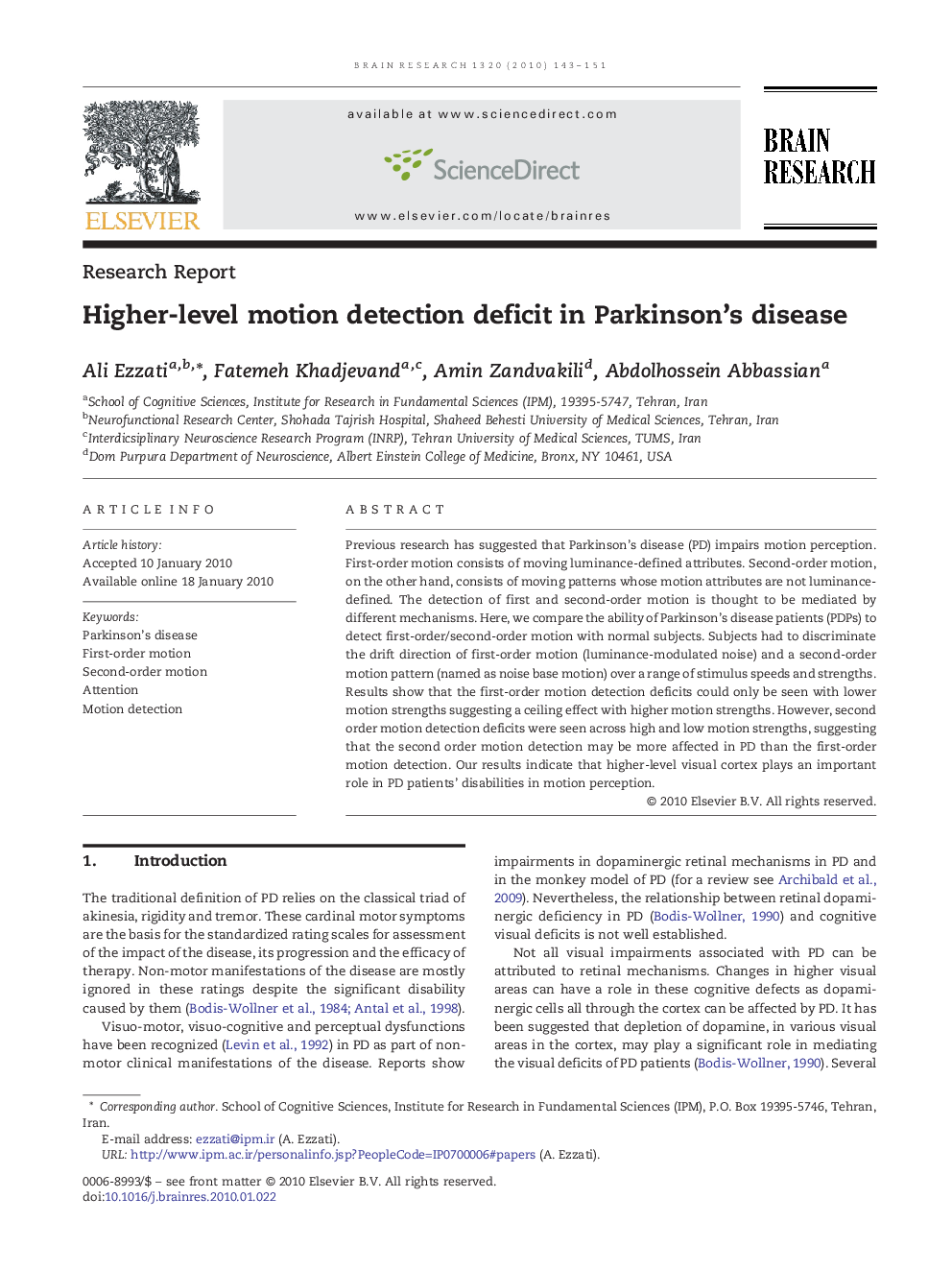| Article ID | Journal | Published Year | Pages | File Type |
|---|---|---|---|---|
| 4327156 | Brain Research | 2010 | 9 Pages |
Previous research has suggested that Parkinson's disease (PD) impairs motion perception. First-order motion consists of moving luminance-defined attributes. Second-order motion, on the other hand, consists of moving patterns whose motion attributes are not luminance-defined. The detection of first and second-order motion is thought to be mediated by different mechanisms. Here, we compare the ability of Parkinson's disease patients (PDPs) to detect first-order/second-order motion with normal subjects. Subjects had to discriminate the drift direction of first-order motion (luminance-modulated noise) and a second-order motion pattern (named as noise base motion) over a range of stimulus speeds and strengths. Results show that the first-order motion detection deficits could only be seen with lower motion strengths suggesting a ceiling effect with higher motion strengths. However, second order motion detection deficits were seen across high and low motion strengths, suggesting that the second order motion detection may be more affected in PD than the first-order motion detection. Our results indicate that higher-level visual cortex plays an important role in PD patients' disabilities in motion perception.
